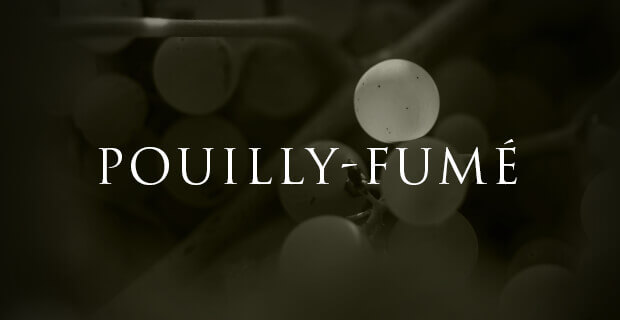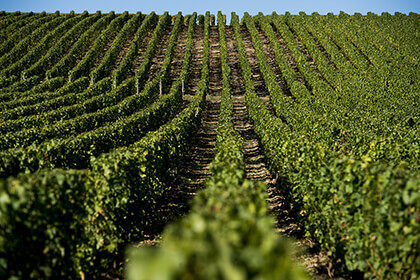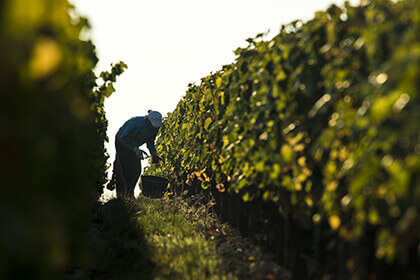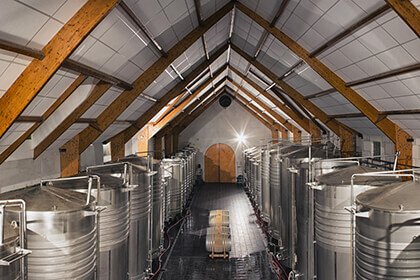
Pouilly-Fuisse Wines
Located in the southern part of Burgundy, at the North limit of Beaujolais area, Pouilly Fuissé is preched at the top of the Mâconnais wine region, in the heart of the great white wine appellations...Read More

In stock. Available for pick-up at store

In stock. Available for pick-up at store

In stock. Available for pick-up at store
The Classic and Timeless Sauvignon Blanc of Pouilly-Fume

Known for its picturesque rolling hills and emblematic chalk soils, Pouilly-Fume is a wine region specializing in Sauvignon Blanc on the right bank of the Loire River in France. Expanding over 1,200 hectares, the appellation is situated on a south-west facing slope and surrounds the charming villages of Saint-Andelain and Les Loges. Soils composed of Kimmeridgian marls and calcareous rock, with flecks of flint mixed in, allow the wines of Sauvignon Blanc to achieve an unrivalled complexity and an inimitable style, most recognizable by its gun-flint minerality. The fresh and vibrant fruit flavors range from citrus to tropical notes, which complement this grape variety’s “grassy” personality. Located just across the river from rival appellation Sancerre, Pouilly-Fume has succeeded in earning a reputation for the exquisite expressiveness of its wines, the perfect white for those yearning for a classic and timeless Sauvignon Blanc.
About the Name
Pouilly-Fume is one of the most acclaimed wine regions of the Loire Valley in France, a dry white made with 100% Sauvignon Blanc grapes. This appellation, which is pronounced “POO-ee foo-MAY,” is often confused with Pouilly-Fuisse (POO-ee foo -SAY), located in the Maconnais region of Burgundy and specializing in Chardonnay. Pouilly-Fume is situated on the far eastern flank of the Loire region, just across the river from rival appellation Sancerre. Unlike Sancerre, however, Pouilly-Fume is fully dedicated to the production of white wine. The name of this appellation is made up of two parts: “Pouilly” is short for Pouilly-sur-Loire, the name of the village where the wines are produced. The word “Fume” is short for “Blanc Fume,” which is the local nickname for the Sauvignon Blanc grape variety.
The fumé in Blanc Fumé is “smoky” in French, and it actually has three different connotations: one associated with the grape, another connected to the soil, and the last one linked to the fog. The Sauvignon Blanc variety has egg-shaped berries in tight clusters. As they mature, a thin smoke-coloured film, or grey bloom, covers the berries. The wine growers refer to this as Blanc fumé, or smoked white, and use the expression to describe the variety. The term fumé also refers to the appellation’s universally-recognised gunflint aroma. It’s such a source of pride that even one of the appellation’s top winemakers, Didier Dagueneau, named one of his top wines “Silex” – a synonym for flint. Many believe this aroma comes from that flint that is scattered throughout the appellation. Lastly, fumé also refers to the fog that blankets the Loire Valley in the early mornings.

From the Benedictines to Phylloxera to Global Success
The Pouilly-Fumé vineyards appeared all the way back in the fifth century during the Gallo-Roman times. However, it wasn’t until the Benedictine monks came along during the Middle Ages when they started to expand the vineyards and make it more of a commercial success. Since they had no family or personal commitments, they could devote their time in the vineyards when their religious duties had finished for the day. The vineyards proximity to the Loire River also contributed to the area’s prosperity since the wines could get to market relatively easier through navigating them along the river. With the opening of the Briare Canal in 1642, Pouilly-Fumé’s wine trade further expanded since the canal linked up the Loire and Seine Rivers meaning that more trade was directed towards Paris where aristocrats and the upper middle-classes enjoyed sipping those aromatic whites.
Guides will tell you that the word “fume” in “Blanc Fume” literally translates to “smoky” in French, in reference to three different elements of the region: the grape, the soil, and the fog. Sauvignon Blanc grapes are egg-shaped, growing in tight clusters. As they ripen, a thin smoke-colored film (grey bloom) covers the fruit, which is why wine growers colloquially refer to this grape variety as a “smoked white.” This term also refers to the appellation’s easily-recognized gunflint aroma, which is believed to come from the flint scattered throughout the appellation. This signature aroma is such an important source of pride that one of the appellation’s best-known winemakers, Didier Dagueneau, has even named one of his wines “Silex,” synonymous with “flint.” Lastly, fume makes reference to the fog, which blankets the Loire Valley early each morning.

The Smoking Gunflint Terroir
The vineyards of Pouilly-Fume first appeared back in the 5th century, during the Gallo-Roman era. However, it wasn’t until the Benedictine monks began expanding the vineyards in the Middle Ages that the region achieved any commercial success. Since the monks had no family members or personal commitments to distract them, they devoted all of their free time to their vineyards. The proximity of the vineyards to the Loire River contributed to the prosperity of the area, as the wines could easily get to market, along the river. When the Briare Canal opened in 1642, the wine trade of Pouilly-Fume expanded even further, since the canal linked up the Loire and Seine Rivers and provided a direct path to Paris, where an aristocratic and upper middle-classes clientele awaited aromatic whites to sip on.
The vineyards of Pouilly-Fume first appeared back in the 5th century, during the Gallo-Roman era. However, it wasn’t until the Benedictine monks began expanding the vineyards in the Middle Ages that the region achieved any commercial success. Since the monks had no family members or personal commitments to distract them, they devoted all of their free time to their vineyards. The proximity of the vineyards to the Loire River contributed to the prosperity of the area, as the wines could easily get to market, along the river. When the Briare Canal opened in 1642, the wine trade of Pouilly-Fume expanded even further, since the canal linked up the Loire and Seine Rivers and provided a direct path to Paris, where an aristocratic and upper middle-classes clientele awaited aromatic whites to sip on.

Pouilly-Fumé Estates: An Ode to Sauvignon Blanc’s Flintiness
Two of the Pouilly-Fume region’s most celebrated producers belong to the Mellot family, who represent not just this appellation but also many others in the Loire region. The first mention of vine growers and wine merchants in the Mellot family were in local records from 1513. Since then, the Alphonse Mellot estate has passed from one generations to the next, within the family. Alphonse Mellot and his son work as a team to create exquisite wines also in Sancerre, from Sauvignon Blanc and Pinot Noir. Domaine Joseph Mellot is another distinguished estate in the Mellot family. Joseph Mellot once ran the Alphonse Mellot estate with his brother Edmond, but decided to establish his own business in 1969. Catherine Corbeau Mellot now runs the estate, which serves as an ambassador for all eight of the Centre-Loire Valley appellations. Their cuvees of Pouilly-Fume are characterized by a great finesse, elegance and complexity, enveloped in notes of fresh citrus and exotic fruit. The estate’s portfolio includes wines aged in stainless steel and those fermented and aged in oak barrels. But they have in common the signature crispy, biting acidity and aromatic persistence of Sauvignon Blanc.

Domaine Pascal Jolivet is another remarkable estate in Pouilly-Fume, dating back to 1926, which is when the Jolivet family first entered the world of wine. Pascal Joliet manages the estate under his own name, with the help of talented Italian oenologist Valentina Buoso. For Joliet, the Sauvignon Blanc variety is all about freshness, balance and precision. He strives to amplify as much as possible the purity of the fruit and to provide an authentic expression of terroir with the use of exclusively indigenous yeasts. The result is a range of dazzling wines with a finesse borrowed from limestone, the richesse of limestone-clay, and the structure and minerality from flint soils. Last but not least, the Chateau de Tracy is another acclaimed representative of Pouilly-Fume, offering some of the best expressions of the Sauvignon Blanc varietal. The vineyards of this estate have produced complex and diverse wines since 1396, but the estate was restored to its former glory in 1952 by Count and Countess Alain d’Estutt d’Assay. Today, Henry d’Assay heads the 33-hectare domaine. At the tasting, these rich, complex wines often reveal a variety of floral aromas, which may include broom, boxwood and lily-of-the-valley, along with a bouquet of sunny citrus and tropical fruit fragrances, underpinned by green pepper and spicy vanilla. Such luscious Sauvignon Blanc will pair beautifully to your favorite types of food.
With all of its dazzling fruit aromas and pleasantly nervy acidity, the wines of Pouilly-Fume seduce wine lovers who enjoy classic and timeless Sauvignon Blanc. Before the last sip of one of these brilliantly textured white wines, you’ll find yourself already yearning for your next encounter with Pouilly-Fume.